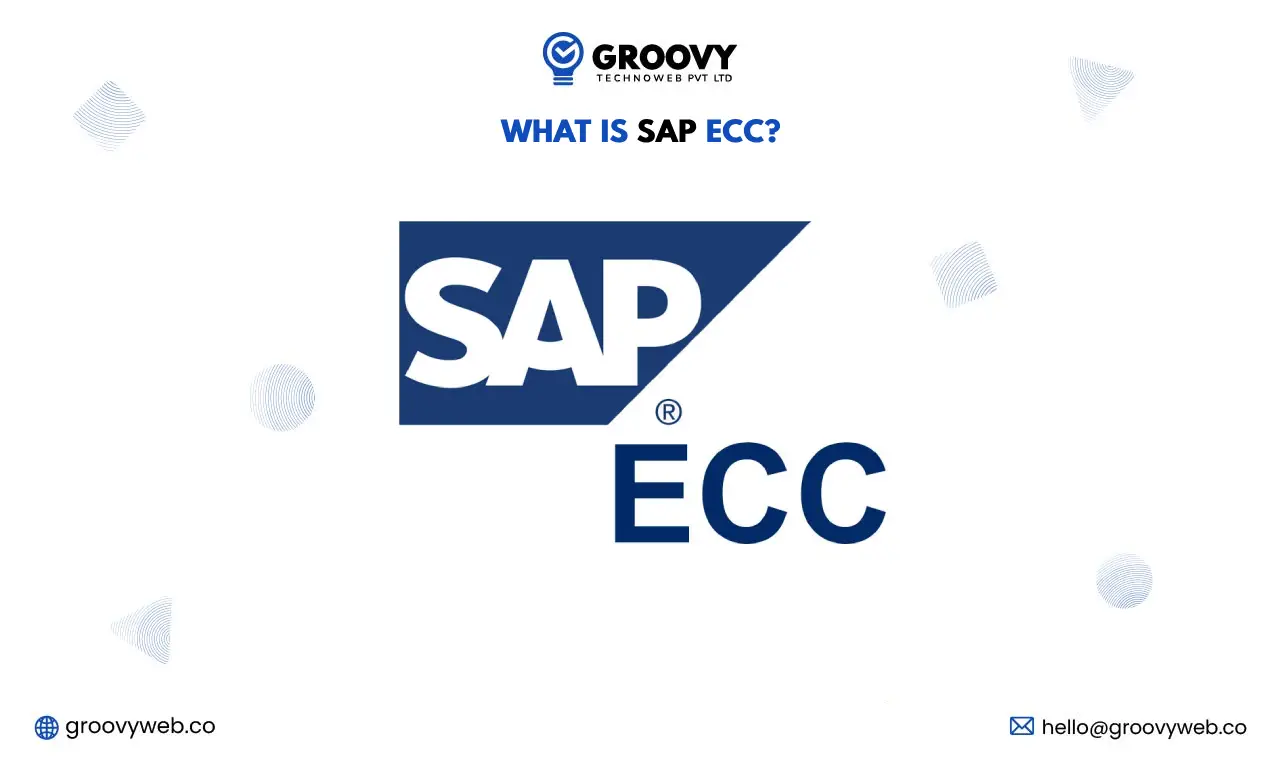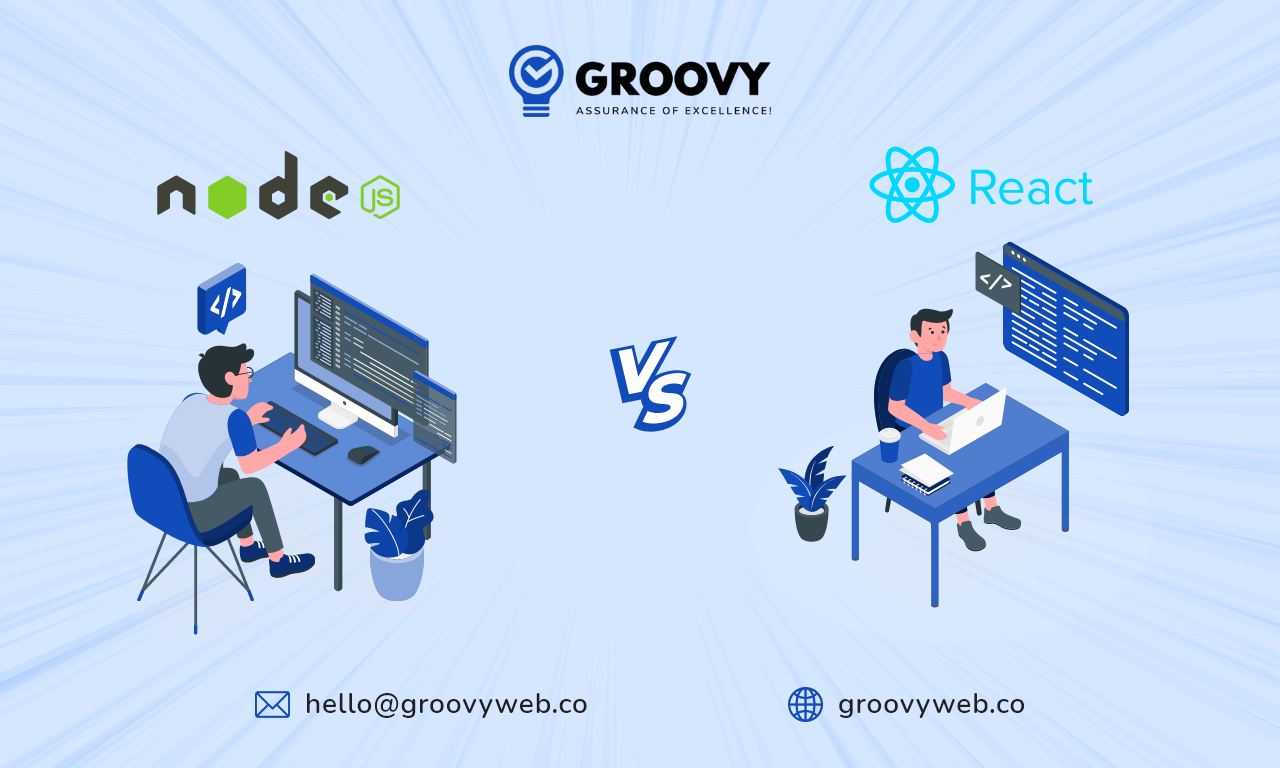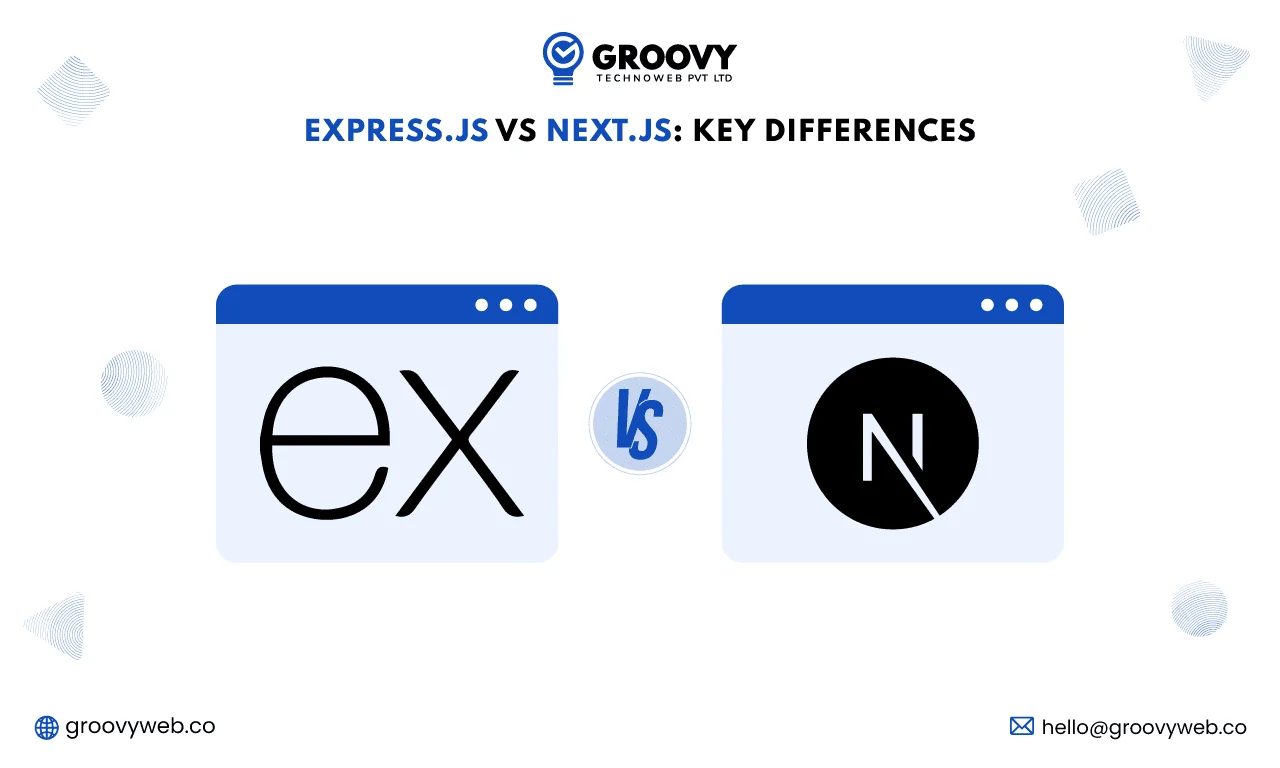SAP ECC vs. SAP S/4HANA: What Is the Difference?
Rahul Motwani
April 15, 2025 17 Views
Quick Summary : When evaluating SAP ECC vs SAP S/4 HANA, the key differences lie in architecture, performance, and innovation potential. S/4 HANA offers a simplified data model, real-time analytics, and a modern user experience, unlike the traditional structure of ECC. Migrating to S/4 HANA allows businesses to optimise operations, automate workflows, and integrate advanced tools. It supports better decision-making and agility for future growth. For organisations looking to tailor the platform to their specific needs, partnering with a custom app development company can ensure a smoother transition and greater long-term value through personalised ERP enhancements and integrations.
In today’s rapidly evolving business landscape, selecting the right Enterprise Resource Planning (ERP) system is crucial for operational efficiency and competitiveness. SAP, a global leader in ERP solutions, offers two prominent systems: SAP ECC and SAP S/4HANA. While SAP ECC has been a reliable choice for many years, SAP S/4HANA represents the next generation of ERP systems designed to meet the demands of modern enterprises. This article provides a comprehensive SAP ERP comparison, highlighting the key differences between SAP ECC and SAP S/4HANA to assist businesses in making informed decisions.
What is SAP ECC?
SAP ECC (ERP Central Component) is a modular ERP system widely adopted across various industries. It operates on traditional relational databases like Oracle, IBM DB2, and Microsoft SQL Server. SAP ECC encompasses modules such as Finance (FI), Controlling (CO), Sales and Distribution (SD), and Materials Management (MM), among others. These modules function independently but are integrated to provide a cohesive system.
However, SAP ECC has limitations, including complex data models, batch processing, and limited real-time analytics capabilities. These constraints can hinder agility and responsiveness in today’s fast-paced business environment.

What is SAP S/4HANA?
SAP S/4HANA is SAP’s latest ERP suite, built on the advanced SAP HANA in-memory database. This architecture enables real-time data processing and analytics, providing businesses with immediate insights. SAP S/4HANA offers a simplified data model, a modern user interface through SAP Fiori, and enhanced functionalities that leverage artificial intelligence and machine learning.
The system is designed to streamline business processes, reduce data redundancy, and improve user experience. With deployment options including on-premise, cloud, or hybrid models, SAP S/4HANA offers flexibility to meet diverse organisational needs.

Key Differences Between SAP ECC and SAP S/4HANA
| Category | SAP ECC | SAP S/4HANA |
|---|---|---|
| Database Technology | Compatible with various traditional databases; relies on disk-based storage, limiting data processing speed. | Exclusively runs on SAP HANA in-memory database for faster data retrieval and real-time analytics. |
| Data Model | Complex data model with many aggregate and index tables, leading to redundancy. | Simplified data model with Universal Journal (ACDOCA), reducing redundancy and improving reporting. |
| User Experience | Uses traditional SAP GUI, which may not be intuitive. | Incorporates SAP Fiori for a modern, responsive, and role-based interface across devices. |
| Processing Capabilities | Heavily dependent on batch processing, causing delays in data availability. | Enables real-time data processing, improving decision-making and operational efficiency. |
| Functional Enhancements | Standard functionalities with limited use of advanced technologies. | Includes predictive analytics, machine learning, and RPA for optimized business processes. |
| Deployment Options | Primarily on-premise deployment. | Flexible deployment: on-premise, cloud, or hybrid to suit diverse business needs. |
Migration Considerations
SAP has announced that support for SAP ECC will end in 2027, with extended support until 2030. Organisations need to plan their SAP migration strategies accordingly. Migration approaches include:
- Greenfield Implementation: Starting fresh with a new SAP S/4HANA system, allowing for process redesign and optimisation.
- Brownfield Conversion: Upgrading the existing SAP ECC system to SAP S/4HANA, preserving current processes and customisations.
- Hybrid Approach: Combining greenfield and brownfield methods to suit specific organisational needs.
It’s essential to thoroughly assess current systems, data quality, and business processes before embarking on the migration journey.
Business Benefits of SAP S/4HANA
Transitioning to SAP S/4HANA offers several advantages:
Enhanced Performance:
In-memory computing significantly accelerates data retrieval and transaction speeds, leading to faster business processes. This enhanced responsiveness ensures minimal delays and boosts overall operational efficiency.
Real-Time Analytics:
Access to live data empowers decision-makers to respond instantly to business changes and market demands. Real-time insights lead to smarter forecasting, improved agility, and competitive advantage.
Simplified Processes:
S/4HANA simplifies business operations with a streamlined data model and modern user experience. Reduced complexity cuts down on training time and enhances productivity across departments.
Future-Ready Platform:
With built-in AI, machine learning, and automation, the platform supports long-term digital transformation goals. It enables businesses to innovate faster and stay ahead of industry shifts.
Scalability:
Flexible deployment options—on-premise, cloud, or hybrid—adapt to varying business needs and growth stages. This scalability supports seamless expansion and system adaptability over time.

Challenges and Risks in Migration
While the benefits are substantial, migrating to SAP S/4HANA presents challenges:
-
Cost and Resource Allocation
Migrating from SAP ECC to SAP S/4HANA demands a significant financial commitment and careful allocation of internal resources. Organisations must also account for licensing costs, consulting fees, and time spent by personnel across departments.
-
Data Migration Complexity
Transferring large volumes of business-critical data requires meticulous planning to maintain accuracy and consistency. Ensuring data compatibility with the new HANA database is crucial to prevent operational disruptions post-migration.
-
Change Management
Transitioning to a new ERP system affects workflows, employee routines, and decision-making structures. Comprehensive training programs and internal support are essential to help teams embrace and adopt the new environment effectively.
-
System Downtime:
Even with careful planning, some downtime is inevitable during SAP migration. Ensuring minimal disruption to core operations is vital, especially for large enterprises that rely on 24/7 system availability.
-
Customisation Conflicts:
Many companies have heavily customised their SAP ECC environments. Migrating these customisations to SAP S/4HANA may require reengineering, as some legacy custom codes may not be compatible with the new architecture.
-
Skill Gaps:
Adopting SAP S/4HANA may necessitate hiring or training personnel in HANA database management, SAP Fiori development, and modern ERP practices. Businesses often partner with a custom app development company to close these skill gaps efficiently.
The Role of Custom ERP Development in Migration
Migration isn’t just a platform shift—it’s a strategic window for digital transformation. Moving from SAP ECC to SAP S/4 HANA allows businesses to reevaluate legacy systems, streamline operations, and leverage advanced technologies. This is where ERP app development plays a pivotal role in shaping a system that aligns precisely with business goals.
Instead of replicating old processes, companies can partner with a custom app development company to build flexible, scalable, and future-ready ERP solutions. This includes:
- Tailoring modules specifically to match unique business workflows, enabling improved productivity and reduced friction.
- Developing SAP Fiori-based applications that offer a modern, intuitive user interface, making tasks more user-friendly and accessible across devices.
- Seamless third-party integrations to connect tools like CRMs, eCommerce platforms, and analytics software, boosting overall system capability.
- Creating real-time dashboards that provide actionable insights through KPIs, enabling faster and smarter decision-making.
A well-executed SAP migration backed by thoughtful custom development doesn’t just ensure continuity—it fosters innovation. With the right ERP solutions partner, organisations transform their systems into powerful, intelligent platforms that drive long-term growth and competitive advantage.
Industry Adoption & Market Data
The shift to SAP S/4HANA is gaining momentum. According to SAP’s figures, over 20,000 customers have already adopted S/4HANA as of Q4 2023, and it is projected to grow rapidly as the 2027 ECC deadline approaches.
In a Statista report published in 2023, 38% of surveyed companies across industries reported already using SAP S/4HANA, while 33% stated they were in the planning or implementation phase.
Additionally, a Forrester study commissioned by SAP revealed that companies migrating to S/4HANA observed a 134% ROI over three years, thanks to increased process efficiency and improved decision-making.
Which One Should You Choose?
Deciding between SAP ECC and SAP S/4HANA hinges on your organisation’s current needs and future aspirations.
- SAP ECC: If your business operates in a stable environment with minimal need for real-time analytics or advanced functionalities and significant investments in customisations, continuing with ECC might be feasible in the short term. However, remember that SAP has announced the end of mainstream support for ECC by 2027, with extended support available until 2030.
- SAP S/4HANA: For organisations aiming for digital transformation, enhanced agility, and real-time decision-making capabilities, transitioning to S/4HANA is advisable. Its modern architecture, simplified data model, and advanced features position businesses to better navigate the complexities of today’s market dynamics.
Ultimately, the choice should align with your strategic goals, IT infrastructure, and readiness to embrace change.
Conclusion
The evolution from SAP ECC to SAP S/4HANA represents more than a technological upgrade; it’s a strategic move towards a more agile, intelligent, and future-ready enterprise. While ECC has served businesses well over the years, the limitations in processing speed, user experience, and adaptability underscore the need for modernisation.
SAP S/4HANA addresses these challenges head-on, offering real-time analytics, a simplified data model, and a user-friendly interface. As the 2027 deadline for ECC support approaches, organisations must assess their current systems, evaluate the benefits of S/4HANA, and plan their migration strategies accordingly. Engaging with experienced ERP app development partners can facilitate a smoother transition, ensuring the new system aligns with your business objectives and delivers the anticipated value.
Written by: Rahul Motwani
Rahul Motwani is an experienced Project Manager with a demonstrated history of working in the information technology and services industry. He started his career as a Backend developer and currently has his hands-on managing projects at Groovy Web. He is a strong program and project management professional with a Bachelor's degree focused on Computer Application.
Frequently Asked Questions
We hope these clear your doubts, but if you still have any questions, then feel free to write us on hello@groovyweb.coWhy is SAP S/4 HANA considered better for modern businesses?
SAP ERP comparison highlights that S/4 HANA supports better scalability, analytics, and automation. Its ability to process data in real time and integrate with new technologies makes it more suitable for businesses aiming for digital transformation, unlike ECC, which lacks many advanced functionalities.
What challenges involve SAP migration from ECC to S/4 HANA?
SAP migration involves data conversion, business process redesign, and significant testing. Companies must prepare for technical adjustments and organisational change, ensuring that custom code is compatible and data is accurately transferred to leverage the full benefits of S/4 HANA.
Can businesses customise SAP S/4 HANA based on specific needs?
Yes, businesses can partner with a custom app development company to tailor S/4 HANA modules to fit their unique workflows. This includes developing Fiori apps, creating custom dashboards, and integrating third-party solutions that enhance functionality and align with operational goals.
How do ERP app development services support the shift to S/4 HANA?
ERP app development services are vital in modernising legacy systems during migration. Developers can build custom applications, streamline processes, and ensure smooth integration, helping businesses adapt to new digital environments without disrupting critical operations or compromising user experience.
Related Blog

Krunal Panchal
Nodejs vs Reactjs Comparison: Which To Choose For Your JS Project?
Technology 04 Nov 2023 8 min read
Krunal Panchal
How Much Does it Cost to Develop An On Demand Food Delivery App
Mobile App Development 13 Nov 2024 10 min readSign up for the free Newsletter
For exclusive strategies not found on the blog
